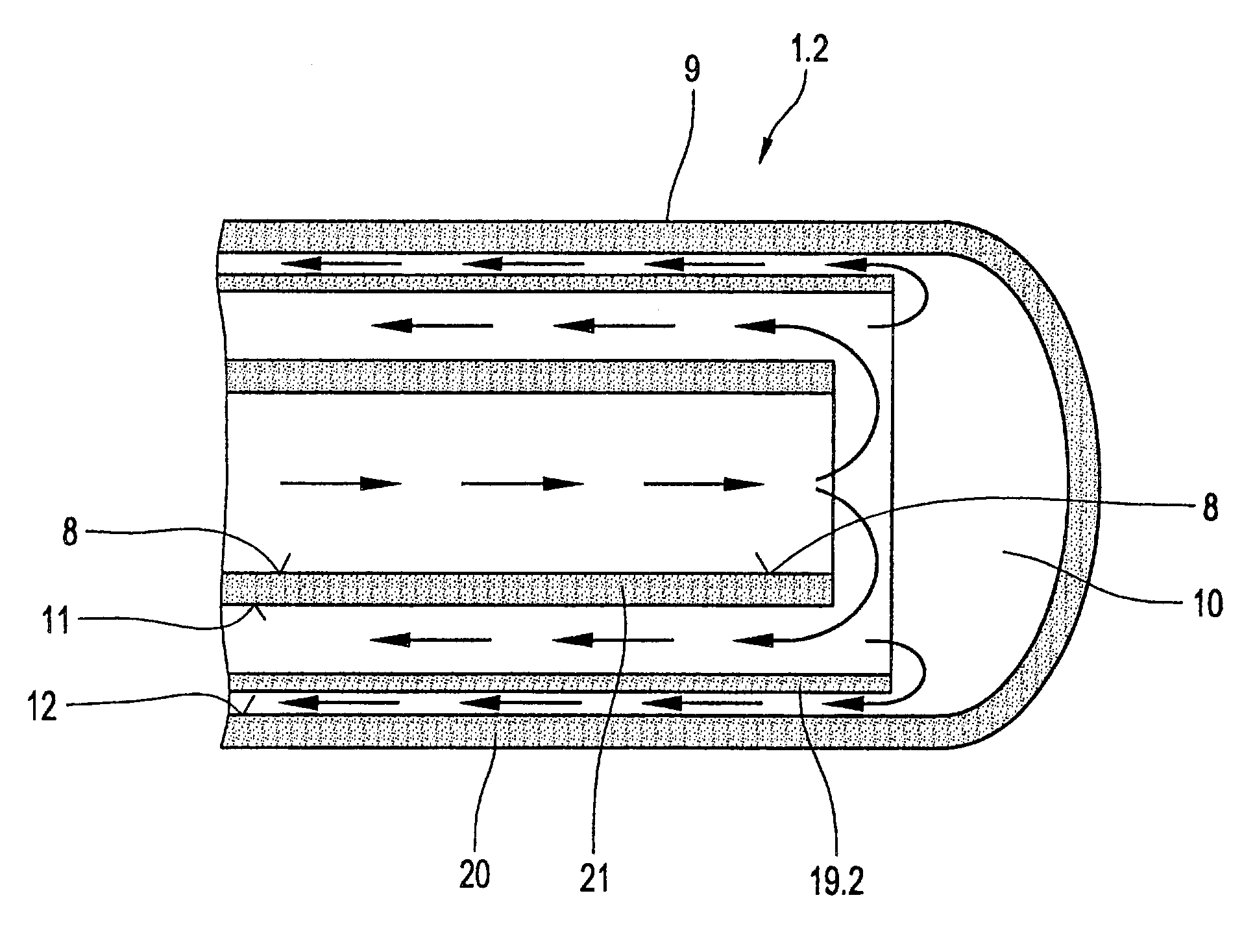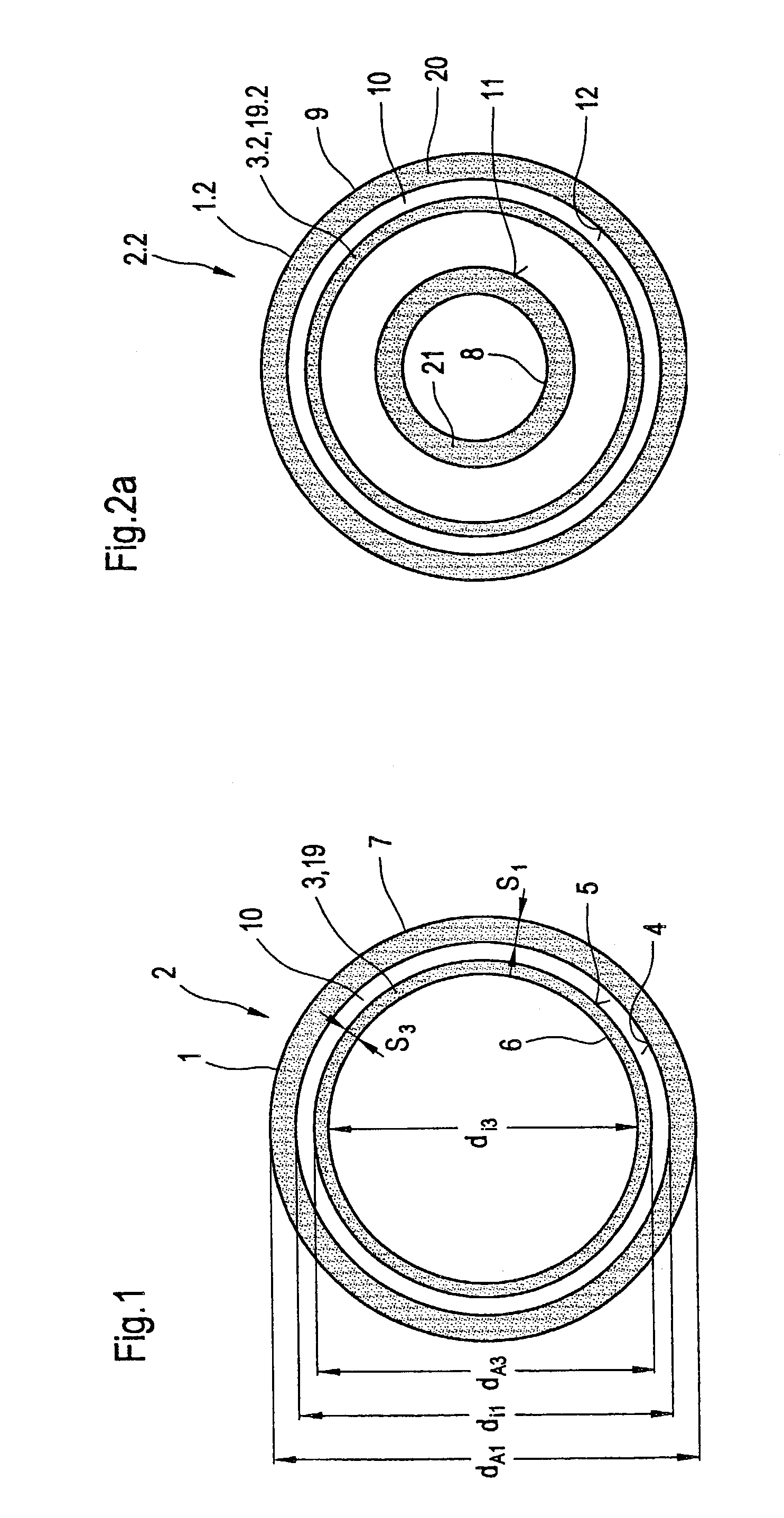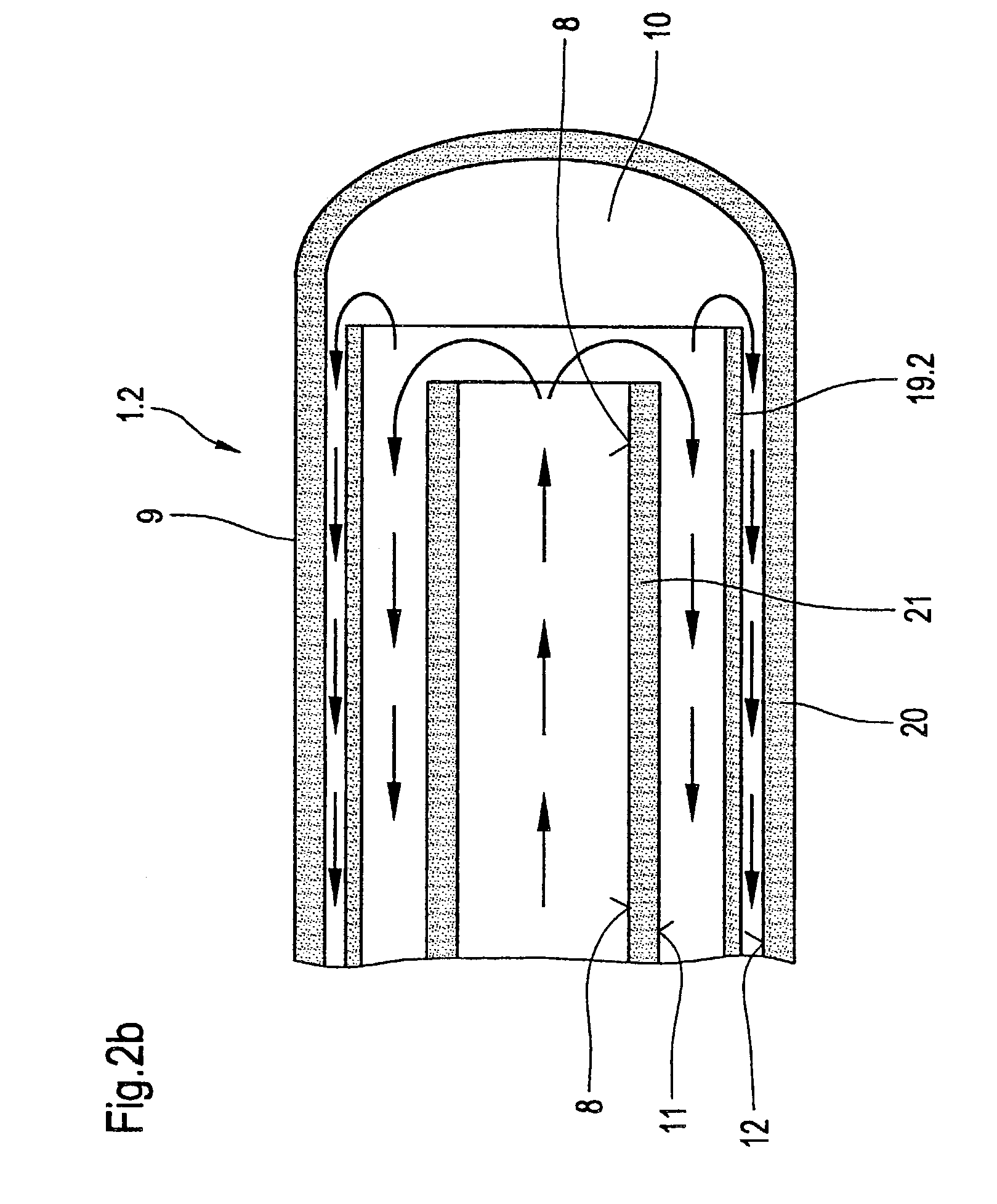Arrangement to increase the thermal fatigue resistance of glass tubes flowed through by fluid and pressure-loaded
a technology of glass tubes and fluids, applied in the direction of solar heat collectors with working fluids, lighting and heating apparatus, solar heat devices, etc., can solve the problems of glass tube damage, glass tube breakage, and substantial thermal fatigue resistance, so as to increase the thermal fatigue resistance of glass tube flow, the effect of low cost and low cos
- Summary
- Abstract
- Description
- Claims
- Application Information
AI Technical Summary
Benefits of technology
Problems solved by technology
Method used
Image
Examples
Embodiment Construction
[0030]FIG. 1 illustrates an arrangement according to the invention using a diagrammatic simplified sectional view through a glass tube 1 to increase the thermal fatigue resistance of glass tubes through which fluid flows and are pressure-loaded. The arrangement is marked with 2. This comprises an interior component 3 in form of a thin-walled glass tube 19, which is slid into the glass tube 1 to be protected, in particular into the interior 10 surrounded by said glass tube. Glass tube 1 and interior component 3 are connected hydraulically with one another, i.e. the interior component 3 does not form an interior separate from the interior 10. The outside diameter dA3 of the thin-walled tube 19 is smaller than the inside diameter dI1, of the glass tube 1. In the condition of being flown through by fluid of the glass tube 1 both—both glass tube 1 and thin-walled tube 19—are free of a direct thermal connection by direct contact, in particular the inner surface 4 of the glass tube 1 chara...
PUM
 Login to View More
Login to View More Abstract
Description
Claims
Application Information
 Login to View More
Login to View More - R&D
- Intellectual Property
- Life Sciences
- Materials
- Tech Scout
- Unparalleled Data Quality
- Higher Quality Content
- 60% Fewer Hallucinations
Browse by: Latest US Patents, China's latest patents, Technical Efficacy Thesaurus, Application Domain, Technology Topic, Popular Technical Reports.
© 2025 PatSnap. All rights reserved.Legal|Privacy policy|Modern Slavery Act Transparency Statement|Sitemap|About US| Contact US: help@patsnap.com



